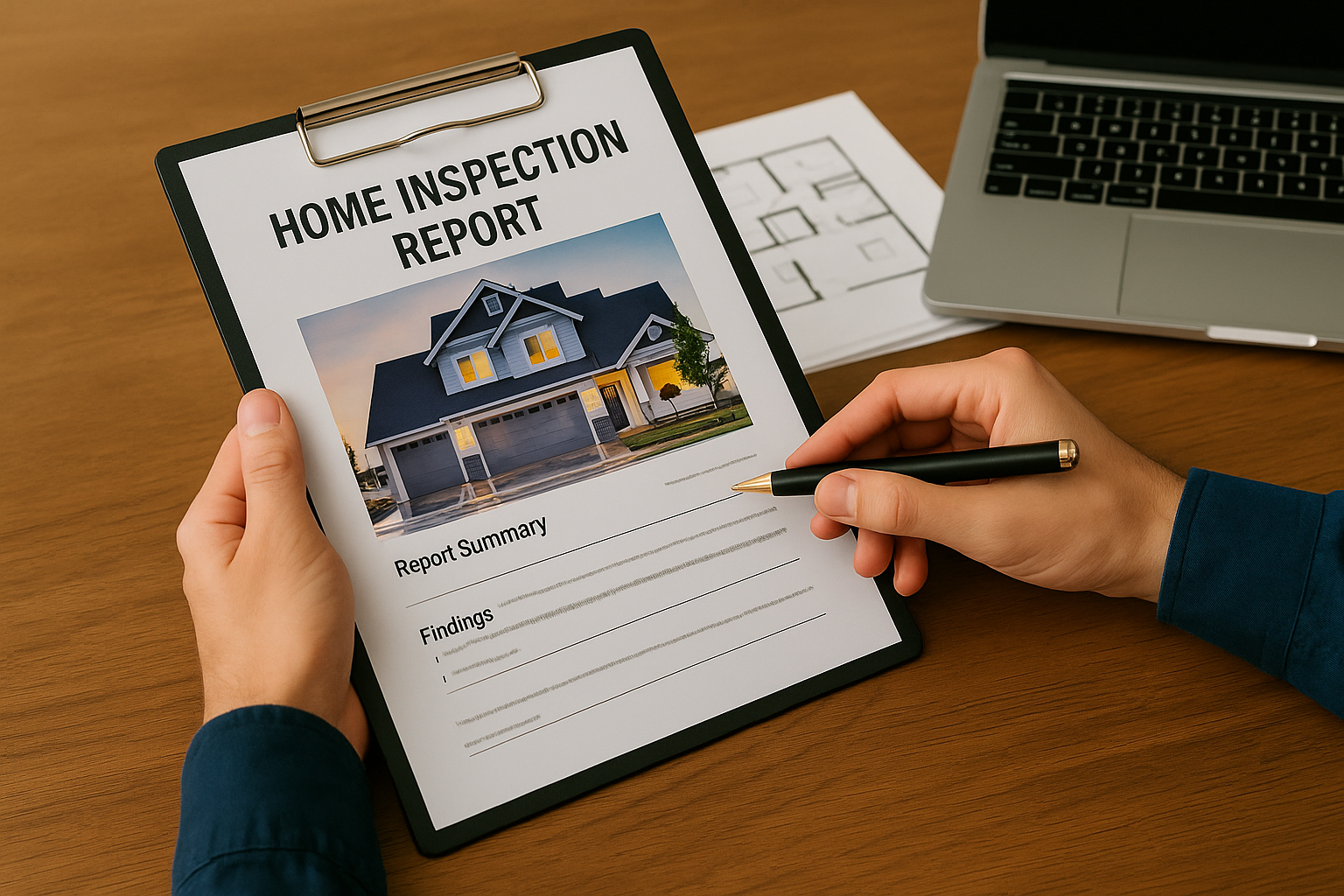Home inspection reports are dense. You get a stack of pages, a bunch of photos, and a list of problems. Some big, some small. The important stuff isn’t always obvious. One missed detail can mean thousands in repairs. Don’t treat the report like a formality. It’s the only document that lays out exactly what you’re buying and what you’ll need to fix. When we conduct an inspection, our goal is to make sure you have a clear understanding of every issue that could impact your investment.

Where to Start
Start with the summary. This isn’t just a recap. It’s a list of the biggest risks and the most urgent repairs. Safety hazards, structural problems, and anything flagged as “immediate action required” land here. These aren’t suggestions. They’re the issues that can stop a sale, drain your budget, or put your family at risk. Don’t gloss over this section. Read every word.
- Major safety issues: fire hazards, missing handrails, exposed wiring
- Structural red flags: cracks in the foundation, sagging beams, shifting walls
- Active leaks: water stains, mold, soft spots in floors or ceilings
- HVAC failures: no heat, no cooling, broken thermostats
Every item in the summary demands attention. These aren’t cosmetic. They’re the problems that cost real money and time to fix. Ignore them, and you’ll pay for it later.
Digging Into the Details
After the summary, move to the main sections. Each one covers a different part of the house. Don’t skim. Look for patterns. One loose wire might be a fluke. Multiple electrical issues point to bigger trouble. Here’s what to watch for in each section:
- Structural Components: Cracks, bowing, or shifting. These signal movement. Movement means instability. Instability means expensive repairs.
- Roofing Assessment: Missing shingles, soft spots, or ponding water. These let water in. Water ruins insulation, drywall, and framing.
- Electrical Systems: Exposed wires, outdated panels, or overloaded circuits. These start fires. Old panels can’t handle modern loads.
- Plumbing Overview: Leaks, corrosion, or slow drains. Leaks rot wood. Corrosion bursts pipes. Slow drains mean clogs or worse.
- HVAC Evaluation: Noisy units, weak airflow, or uneven temperatures. These point to failing systems. Repairs add up fast.
Don’t get distracted by minor notes. Focus on anything that threatens safety, stability, or comfort. These are the issues that matter most. Our inspectors are trained to highlight these critical concerns so you can prioritize what truly needs attention.
Sorting Urgent From Cosmetic
Not every problem needs a contractor tomorrow. Some issues can wait. Others can’t. Here’s how to tell the difference:
- Words like “unsafe,” “failing,” or “immediate repair needed” mean act now.
- Notes marked “monitor” or “maintain” can wait, but don’t ignore them forever.
- Cosmetic flaws: scuffed paint, worn carpet, loose doorknobs. These don’t affect safety or structure. Fix them on your own schedule.
Major repairs drain your budget. Cosmetic fixes can wait until you settle in. Don’t let small stuff distract you from the real risks. If you’re unsure which issues to tackle first, our team at Aspen Home Inspections can help clarify what’s urgent and what can wait.
Using Photos to Your Advantage
Photos in the report aren’t just for show. They’re proof. Each image should point out exactly where the problem sits. Look for arrows, circles, or notes on the photo. These help you find the issue fast when you walk the property. Don’t just glance at the pictures. Match each one to the written note. If a caption says “active leak under kitchen sink,” check the photo for water stains, rust, or mold. Photos make it easier to show contractors what needs fixing. No guessing, no confusion.
Getting Real Repair Estimates
Contractors want specifics. Handing over the full inspection report wastes time. Pull out the sections that matter: roof, electrical, plumbing, HVAC. Share the photos and the exact notes. This keeps the conversation focused. Contractors see the problem, understand the scope, and give you a real estimate. No surprises. No vague quotes. The more detail you provide, the more accurate the price. Don’t settle for a ballpark number. Use the report to get real numbers before you commit. We’ve seen how detailed documentation from Aspen Home Inspections can make the repair process smoother and more transparent for everyone involved.
What Most Buyers Miss
Many buyers get stuck on the wrong details. They worry about chipped paint and ignore a sagging floor. They fix a leaky faucet but miss a failing water heater. The big-ticket items hide in plain sight. Foundation cracks, roof leaks, and electrical hazards cost thousands. Cosmetic fixes cost hundreds. Focus on the issues that hit your wallet hardest. Don’t let small repairs distract you from the real work.
- Foundation repairs: expensive, time-consuming, and disruptive
- Roof replacement: costs more than any other single repair
- Electrical upgrades: required for safety and insurance
- Plumbing overhauls: messy and costly if ignored
Ask questions. Push for clarity. Don’t accept vague answers. The inspection report is your leverage. Use it to negotiate repairs or price reductions. Don’t walk away from a deal without understanding every major issue.
Schedule Your Flagstaff Home Inspection Today
At Aspen Home Inspections, we deliver thorough, easy-to-understand inspection reports for Flagstaff homebuyers. Call us at 928-600-7761 or contact us to get the detailed property insights you need.


